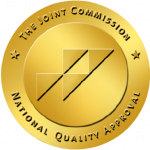A habit is a specific behavior formed from frequent repetition or physiologic exposure. For instance, an individual might have a habit of buying coffee every morning. Although they enjoy coffee and have to come to rely on it, this person might say, “If I don’t have my coffee, I miss it, but I can do without.” Addiction, on the other hand, occurs when an individual is unable to go without the substance. Addiction is a constant compulsive, physiological, or psychological NEED for a habit-forming substance, behavior, or activity having harmful physical, psychological, or social effects. Addiction also typically causes well-defined symptoms, including anxiety, irritability, tremors, or nausea upon withdrawal or abstinence. Addiction is more severe than a habit due to its negative consequences, but the user continues with their behavior anyway because they are unable to stop using a substance or engaging in a behavior. Addiction of any form changes an individual’s brain structure and function. It is critical to view drug addiction as serious and progressive, moving from habit to addiction. Overall, there is a very fine line between what determines a habit from an addiction.
Measuring The Severity of Addiction
It is a human tendency to fall into habits because humans are naturally drawn to the same patterns of behavior. This type of repetition creates familiarity and comfort. Unfortunately, not all of these habits are as innocent as going to the same cafe every morning for coffee before work. Many times, habitual behaviors spin out of control and develop into an addiction. There are obvious criteria that an individual may meet when suffering from an addiction, especially a substance abuse problem. We have included a few questions to help gauge the severity of an addiction below:
- Is your behavior having a negative impact, either directly or indirectly, on your own life or your loved ones’ lives?
- Do you constantly find yourself in a risky situation due to your substance use?
- After a period of not drinking, do you suffer from withdrawal symptoms physically or emotionally, including experiencing anxiety and stress?
- Do you look for excuses and sneaky ways to hide your behavior or justify your substance use habits as okay?
- Have you tried multiple times to stop your substance use on your own, but find it physically impossible?
If the majority of these answers are yes then it is evident that the behavior rises to the level of addiction and is not just an unhealthy habit.
How Addiction Affects The Brain
 Addiction is not just a series of repeated behaviors out of choice. Instead, addiction becomes physiologically reinforced in the brain circuits every time the substance enters the individual’s system. Researchers understand that the pleasure-seeking patterns and relief from emotions experienced when drinking alcohol or using drugs can change neural pathways in the brain, connecting the relief from negative emotions like stress and depression with cravings. In fact, any repeated behavior that consistently and physiologically blocks emotion, trauma, and depression can develop into an addiction.
Addiction is not just a series of repeated behaviors out of choice. Instead, addiction becomes physiologically reinforced in the brain circuits every time the substance enters the individual’s system. Researchers understand that the pleasure-seeking patterns and relief from emotions experienced when drinking alcohol or using drugs can change neural pathways in the brain, connecting the relief from negative emotions like stress and depression with cravings. In fact, any repeated behavior that consistently and physiologically blocks emotion, trauma, and depression can develop into an addiction.
It is important to understand that unlike a habit as innocent as that coffee run, someone struggling with addiction feels that they have no control over their desire to engage in the behavior. For these individuals, addiction controls them rather than vice versa. Another key element to understanding addiction is that this lack of choice makes it easier for an addict to continue to use addictive substances even though they know their addiction is negatively affecting their relationships, source of income, and health. Despite all these consequences, they are still unable to stop the behavior.
Each person’s vulnerability to addiction is complicated and is a consequence of genetic, environmental, and developmental factors. One area that deeply impacts our risk for addiction is our reward system. For instance, when individuals engage in behavior that makes the brain feel rewarded, the neurotransmitter dopamine gets released in the reward synapses and circulates throughout the body. Having dopamine in their system makes people experience pleasure. Having this “feel-good” experience makes it more likely that an individual will use again and re-engage in this behavior in order to experience this dopamine reward. Once a person’s system is exposed to these feelings and they repeat the substance use often enough, the body can become addicted to the substance and acts like it needs this substance to survive.
Addiction often arises when the levels of naturally produced dopamine are disrupted. Normally, when dopamine is released, any excess of this neurotransmitter is reabsorbed quickly by the body in a process often called reuptake. While reuptake occurs, other neurons release GABA, an inhibitory neurotransmitter that prevents a recipient neuron from becoming overstimulated by the dopamine. This is the human body’s natural self-regulatory system.
However, once an individual becomes addicted to a substance and makes a habit of regular use and consumption, the substance becomes more important to the brain and eventually leads to cravings. This also disrupts the body’s natural dopamine reuptake process, resulting in excess levels of dopamine in the brain and body. This mechanism is not limited to drugs and alcohol alone, as addiction can occur with gambling, smoking, sex, compulsive eating, binge eating, caffeine, shopping and even using social media. The difference between these and substance abuse addictions, however, is that there are many dangerous consequences for the body physically and psychologically with drugs and alcohol, including fatal complications.
In sum, drug addiction forms from repeated drug use and the resulting disruption of the normal healthy balance of brain circuitry that controls the reward system, memory, and cognition, all of which can lead to compulsive drug use.
Treatment for Addiction vs Habits
 Both addiction and habits grow out of repeated behaviors, but there are major differences in how these behaviors are treated. At Boardwalk Recovery Center, we take time to distinguish between habits and those patterns that have developed into an addiction. This means not only addressing drug use, but also the rituals associated with substance use. The rituals of substance use are just as addictive as the substance itself, and understanding these helps to distinguish between a troublesome behavior and addiction.
Both addiction and habits grow out of repeated behaviors, but there are major differences in how these behaviors are treated. At Boardwalk Recovery Center, we take time to distinguish between habits and those patterns that have developed into an addiction. This means not only addressing drug use, but also the rituals associated with substance use. The rituals of substance use are just as addictive as the substance itself, and understanding these helps to distinguish between a troublesome behavior and addiction.
One key difference between a habit and the disease of addiction is the duration and amount of effort required to stop the behavior altogether. In general, stopping a habit usually requires minimum effort in a shorter timespan without the need for professional help. Addiction, on the other hand, is much more complicated. Addiction treatment centers guide patients through an integrative process of step work and internal reflection on what led to their dependence. The minimum amount of time needed for addiction treatment is usually around 30 days, with extended time more likely and more successful. Before a patient even enters a facility to begin this journey away from addiction, patients must treat withdrawal symptoms by detoxing. Only then are they ready to heal the emotional pain that blossomed from addiction. We offer professional help and holistic care at Boardwalk Recovery Center to heal not only the disease of addiction but the whole person.
From Habit to Healing: Understanding Addiction and Recovery
Recovery requires that clients honestly assess their behavior and how it affects their overall health, close relationships, job opportunities, spiritual connection, and outlook on life. This helps them to grasp the difference between a habit and an addiction. Clients are encouraged to accept that they have the disease of drug addiction and allow themselves to be guided through a treatment plan.
As health professionals, at Boardwalk Recovery we have witnessed how compliance with treatment is the toughest obstacle we face in aiding recovery. As a result, it’s important that our clients follow a specific treatment plan.
- By explaining the biological basis for addiction, clients are more likely to seek the necessary help they need.
- When they understand the neurological basis of substance abuse addiction, clients are better able to focus on the consequences of their behavior and strategically and successfully tackle their self-destructive patterns.
- Rather than viewing the classification as an attack on their ability and self as a whole, the “diagnosis” of addiction helps patients understand why they have been acting the way they have, despite an effort and desire to change.
- By destigmatizing their shame and self-blame, brain-based scientific explanations help resistant and defensive clients begin to listen to treatment recommendations they may have rejected initially.
Helping clients to understand the difference between addiction and habit is one of the most important contributions to our clients’ success in the recovery process at Boardwalk Recovery Center. Contact us today if you have more questions about the nature of addiction or want to learn more about how we can help put you on the path to lasting recovery.
Life can be good again and we’d like to show you how.






